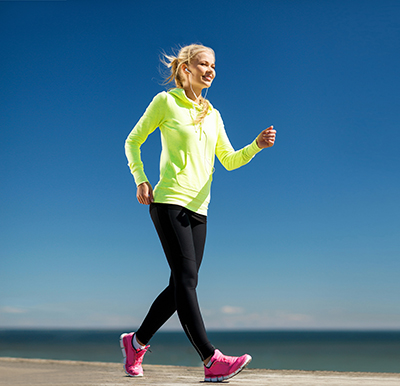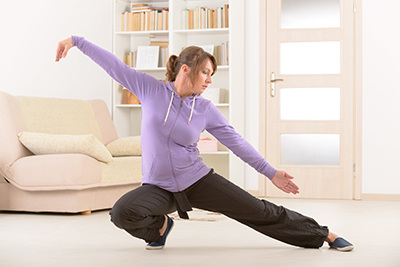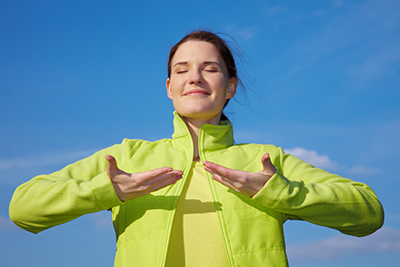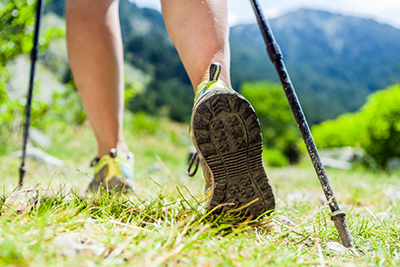Keep On Moving
The last two years have been demanding on everyone in varying degrees.
The pandemic and its many impacts on our daily routines are being felt by young and old alike. I see people coming into my office with unprecedented levels of pain, flare-ups of old conditions, or new injuries from seemingly innocuous activities. From most of them, I will hear a variation of: “I don’t know how it happened… I just woke up like this.”
There are many causes for these acute physical events. The lockdowns have led to a sedentary lifestyle for many of us, with restricted access to gyms and organized sports. It prevented us from connecting with others while participating in both indoor or outdoor activities, hence taking away support systems and accountability partners.
The change from office-based to home-based work also decreased our amount of daily activity. The walk to and from public transport, the walk through the office parking lot and up the stairs, the getting up from one’s office to a coworker’s desk to ask a question or to go to the restroom were all part of a daily dose of activity. And don’t get me started on the lack of ergonomics within improvised home offices!
 Another drawback with working or schooling from home is increased access to goodies. Most of us blame boredom or temptation for the extra snacking, but there is another explanation: The higher stress level triggers an ancient protection system in our body. When you think you are in danger, your brain wants to ensure proper fuel to the brain, muscles, and organs to maximize chances of surviving the perceived threat. This leads to craving comfort food (fat and high carbs) and, very quickly, to weight gain.
Another drawback with working or schooling from home is increased access to goodies. Most of us blame boredom or temptation for the extra snacking, but there is another explanation: The higher stress level triggers an ancient protection system in our body. When you think you are in danger, your brain wants to ensure proper fuel to the brain, muscles, and organs to maximize chances of surviving the perceived threat. This leads to craving comfort food (fat and high carbs) and, very quickly, to weight gain.
Important and sustained stress levels also have another negative impact: They activate the muscular part of the protection system. When the body wants to defend itself, it goes to fight-or-flight. We recognize the increase in heart rate and higher blood pressure, the sweaty palms, the dry mouth that comes with being in danger. The brain also activates the big flexor muscles in your body (trapezius, pectorals, biceps, hamstrings, calves) and inhibits the extensors (erector spinae, quadratus lumborum, quadriceps, rotator cuffs). It wants to protect its vital organs by curling in. This leads to unconscious changes in posture and biomechanics that is less than optimal and conducive to injury.
We therefore have three distinct mechanisms that create negative consequences for our body and mind: The inactivity that leads to muscle deconditioning, weight gain from emotional and physiological reactions, and postural changes linked to non–work-conducive home offices and our neurologically driven protection systems.
How do we break the cycle, reclaim our fitness, and prevent injuries as we do so?
 First, we need to calm our brain and let our body know we are safe. The quickest way to do that is to coregulate with someone that is doing well, someone that we feel safe with. Doing an activity with someone, or having a long hug, or sharing a meaningful conversation with another person are all ways to cope. Connection allows us to change our emotional state, which in turn changes our physiology. A physical state which is not defensive will allow for healing and appropriate response to its environment, including good muscle recruitment.
First, we need to calm our brain and let our body know we are safe. The quickest way to do that is to coregulate with someone that is doing well, someone that we feel safe with. Doing an activity with someone, or having a long hug, or sharing a meaningful conversation with another person are all ways to cope. Connection allows us to change our emotional state, which in turn changes our physiology. A physical state which is not defensive will allow for healing and appropriate response to its environment, including good muscle recruitment.
If we don’t have access to another well-balanced person, breathing exercises, gargling, chanting are also ways to stimulate vagal tone. Invigorating this regulator of our resting nervous system can shift the nervous system from a state of apathy or overstimulation to a state of balance. Cold exposure has also been studied as a means to improve vagal-nerve stimulation, which leads to a host of benefits including decreased heart rate and mood improvement.
 As far as returning to physical activity, start slowly. Walking remains the easiest, safest, and most economical activity. It reaps a ton of benefits such as improved cardiovascular health and better bone density.
As far as returning to physical activity, start slowly. Walking remains the easiest, safest, and most economical activity. It reaps a ton of benefits such as improved cardiovascular health and better bone density.
If you have been inactive for a long period, start on flat ground for 20–30 minutes at a time, and build your way from there, increasing by 5 minutes every few days. Integrate hills to increase the cardiovascular demand and recruit wider groups of muscles. Bring your sticks! Nordic walk is more demanding and will also stimulate cross-crawl motions, which are beneficial for the brain activity and the body’s coordination. Go with a friend or join a walking group: It will feel much more engaging and supportive.
 Other activities with low impact include qi gong, tai chi, yoga, or swimming. Dance classes, from cha-cha to hip hop or even square dancing, all contribute to better cardiovascular health, stimulate memory, and have the added benefit of stimulating those happy hormones we get from social interactions in our brain.
Other activities with low impact include qi gong, tai chi, yoga, or swimming. Dance classes, from cha-cha to hip hop or even square dancing, all contribute to better cardiovascular health, stimulate memory, and have the added benefit of stimulating those happy hormones we get from social interactions in our brain.
For those who have been wanting to go back to their more intense activities like martial arts or other higher-impact sport, remember that you are not starting back to your previous state of fitness. Start with basic training and technique, and let your body get used to the patterns and muscle recruitment it was used to.
At home, incorporate stretching in your daily routine. Touch your toes and reach up to the sky 5–10 times every hour. Do “superman” strengthening exercises once a day, where you lay on your stomach with your arms in front of you, lift your arms first, and then—if you feel strong—your chest and your legs. Hold the position for 2 seconds, and repeat 5–10 times.
 Breathing Exercise
Breathing Exercise
- Breathe more slowly (aim for six breaths per minute).
- Breathe more deeply, from the belly. Think about expanding your abdomen and widening your rib cage as you inhale.
- Exhale longer than you inhale.
 Nordic Walk
Nordic Walk
Adding poles as you walk activates all of the muscles of the upper body. Nordic walking typically increases your speed and your heart rate, burning more calories than regular walking. On YouTube, type in “nordic walk basic technique”; there is a great video by Sikana.
Here’s to movement—in the right direction.
 Dr. Nathalie Godbout, Chiropractor
Dr. Nathalie Godbout, Chiropractor
Dr. Nathalie Godbout believes that a nervous system without interference plays a key role in our health, allowing us to adapt optimally to our changing environment. Moreover, our health behaviours (sleep, exercise, nutrition, and mental health) are essential to this balance.
harmoniechiropratique.com

 Stores
Stores